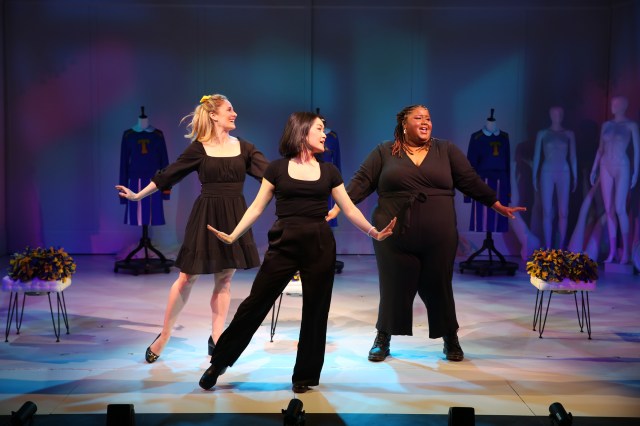Review: Vanities — The Musical Looks for a Second Chance Off-Broadway
The York Theatre Company revives David Kirshenbaum and Jack Heifner’s earworm-heavy musical 14 years after its New York debut.

(© Carol Rosegg)
Thanks to the magic of cast albums, a good portion of the York Theatre Company’s audiences will be coming to see its revisal of Vanities already singing some of David Kirshenbaum’s bouncy tunes. Adapted from Jack Heifner’s hit 1976 off-Broadway play (and with a book by Heifner himself), the musical three-hander about female friendship and growing up (and sometimes growing apart) first opened off-Broadway in 2009. It got middling reviews that stymied its Broadway aspirations, but the album (featuring the lovely voices of Lauren Kennedy, Sarah Stiles, and Anneliese van der Pol) left behind the impression of a sweet, sentimental, and exceedingly hummable show that should have had legs. Seeing now what lives inside the gaps between musical tracks, it’s clear why Vanities’ legs have always been a bit too thin to run.
The show has apparently undergone some changes since its first turn in New York City, but you get the sense (to borrow the musical’s central motif) that cosmetic adjustments were favored in lieu of a complete overhaul. We see our central trio — Joanne (Hayley Podschun), Kathy (Amy Keum), and Mary (Jade Jones) — start their journey in 1963 as high school cheerleaders who are at their most optimistic and, naturally, most oblivious. They fall evenly across the spectrum of female archetypes — Joanne a peppy, conservative, future housewife of America; Kathy, a lost soul who clings to projects and checklists; and Mary, an incipient renegade ready to embrace the liberation of the free-love generation.
Like a forward-moving Merrily We Roll Along, musical interstitials (featuring the three women self-consciously inspecting their reflections) send us next to 1968 where our popular cheerleaders have evolved into popular sorority girls; then to 1974 where post-college life is speckled with disillusionment and betrayal; and finally to a shoehorned scene in 1990 (the musical’s addition to Heifner’s three-act play) where we witness a tidy reconciliation among life-long friends.
The material itself leans too much on cliché, with the entirety of our characters’ personal hurdles wrapped up in the show’s “vanity” metaphor (as if acolytes of The Feminine Mystique were simply figuring out how to care less about appearances). Director Will Pomerantz, unfortunately, makes Vanities even flimsier by taking away the production elements that could give it some dimension. As a period piece, the musical follows America’s transition from an innocent world changed by the Kennedy assassination (the event that ends Act 1), into an era of war and protest that subverts all the systems our naïve, clout-chasing cheerleaders were taught to value.
And yet, Barbara Erin Delo’s era-defining costumes are relegated to manikins at the rear of the stage while the actors keep to their black uniforms. The space in which they roam around is left similarly blank, mirroring the musical’s now-unspecified setting (it was originally set in Texas but now finds itself in Small Town, USA). Perhaps these are efforts to universalize and modernize an irretrievably dated narrative, but all they have managed to do is dilute the most interesting bits of storytelling.
On a brighter note, Kirshenbaum’s score is as charming as ever and has three strong voices to do it justice. Podschun, Keum, and Jones don’t have the most convincing chemistry as friends, but musically, they blend beautifully, and all have shining moments of their own. Jones breaks out their powerful belt for Mary’s anticipatory number, “Fly Into the Future.” Keum, meanwhile, wins the show’s best character ballad with Kathy’s endearing and mournful “Cute Boys With Short Haircuts.”
Of the three, however, Podschun gives the standout performance. She lends the most texture and genuine character development to the show’s token simpleton, Joanne, and proceeds to make hay of her buoyant midlife crisis song, “The Same Old Music” (her character is barely 30 but it’s never too early for a breakdown). It’s one of the few moments where the actual production matches the musical I’ve mentally crafted around the album. Perhaps we can count this as just another false start in the life of Vanities — or, maybe some musicals are best left to the ears and the imagination.








